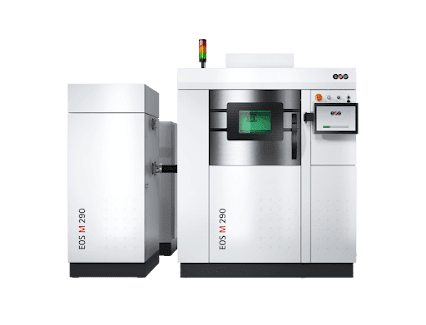Unlocking the Future of Production with EOS Additive Manufacturing
In today’s rapidly evolving manufacturing landscape, businesses are constantly searching for ways to innovate, reduce costs, and improve efficiency. One of the most transformative technologies revolutionizing industries across the globe is additive manufacturing. Among the leading solutions in this field is EOS additive manufacturing, a pioneer in 3D printing that is changing how companies approach product design, prototyping, and production.
EOS, a global leader in industrial 3D printing, offers advanced additive manufacturing solutions that help businesses tackle complex manufacturing challenges. By enabling the creation of parts layer by layer, EOS additive manufacturing empowers industries to produce high-quality, highly customizable parts in a variety of materials, all while reducing waste and increasing flexibility.
The Advantages of EOS Additive Manufacturing
Additive manufacturing, also known as 3D printing, involves building objects layer by layer from a digital model. Unlike traditional manufacturing methods such as casting or machining, additive manufacturing allows for more intricate and detailed designs, faster production times, and the ability to make adjustments quickly. With EOS additive manufacturing, businesses gain the following benefits:
-
Design Flexibility: One of the most notable advantages of EOS additive manufacturing is the flexibility it offers in design. Engineers can create highly complex geometries and structures that are difficult or impossible to achieve with conventional methods. This enables the production of parts with lightweight designs, intricate internal structures, and other unique features that optimize performance.
-
Material Versatility: EOS additive manufacturing supports a wide range of materials, from plastics to metals, offering businesses the ability to produce functional parts across various industries. The use of specialized metal powders, such as titanium and aluminum alloys, allows for the production of components with high strength, durability, and heat resistance, making it ideal for aerospace, automotive, and medical applications.
-
Rapid Prototyping: Traditional manufacturing methods often involve lengthy prototyping phases that can slow down product development. EOS additive manufacturing reduces this lead time significantly by allowing for rapid prototyping of parts directly from digital files. This quick iteration cycle helps businesses accelerate the design process, test products faster, and bring innovations to market sooner.
-
Cost-Efficiency: With traditional manufacturing methods, companies often face high tooling costs and material wastage. EOS additive manufacturing eliminates the need for expensive molds and dies, significantly reducing upfront costs. Moreover, the layer-by-layer production method minimizes material waste, making it more sustainable and cost-efficient.
-
Customization and Low-Volume Production: EOS additive manufacturing is particularly beneficial for producing customized parts in small quantities. Traditional mass production methods are often not suitable for low-volume, highly customized production runs due to the high costs of retooling. EOS, however, allows for on-demand production of customized parts at a lower cost, enabling manufacturers to meet specific customer requirements without compromising on quality.
Applications of EOS Additive Manufacturing
EOS additive manufacturing has found applications in several industries, including aerospace, automotive, healthcare, and industrial sectors. Here are some notable examples of how companies are leveraging EOS additive manufacturing for their advantage:
-
Aerospace: In the aerospace industry, where parts must be lightweight, durable, and capable of withstanding extreme conditions, EOS additive manufacturing provides an ideal solution. Components such as turbine blades, structural parts, and complex interior cabin features can be produced with greater precision and efficiency.
-
Automotive: The automotive sector benefits from EOS additive manufacturing by enabling the production of lightweight parts that reduce fuel consumption and improve performance. From prototyping to producing production-grade parts, automotive manufacturers use EOS 3D printing technology for everything from engine components to custom tools.
-
Healthcare: EOS additive manufacturing is revolutionizing the healthcare industry by enabling the production of custom medical implants and prosthetics. These parts are tailored to fit the specific needs of patients, improving the quality of care and reducing recovery times. Additionally, 3D-printed medical models help surgeons plan complex procedures with greater accuracy.
The Future of EOS Additive Manufacturing
The future of EOS additive manufacturing looks incredibly promising, with ongoing advancements in materials, software, and machine capabilities. As more industries recognize the advantages of additive manufacturing, the adoption of this technology is expected to grow exponentially in the coming years. Innovations such as multi-material printing and improved post-processing techniques are paving the way for more efficient production workflows.
Furthermore, with the integration of artificial intelligence (AI) and machine learning into the additive manufacturing process, future EOS systems will be able to optimize production, detect potential flaws, and ensure the highest quality output. The growing interest in sustainable manufacturing practices also aligns with the environmental benefits of 3D printing, which reduces waste and minimizes energy consumption compared to traditional methods.
Conclusion
EOS additive manufacturing is a game-changer for industries looking to stay competitive in a fast-paced, ever-evolving marketplace. By offering unmatched flexibility, efficiency, and design capabilities, EOS helps businesses streamline their production processes and bring innovative products to life. Whether you’re looking to create custom parts, reduce costs, or accelerate your time to market, EOS additive manufacturing offers a cutting-edge solution that can transform your manufacturing operations.
As industries continue to explore the potential of 3D printing, the future of EOS additive manufacturing promises even greater possibilities, setting the stage for a new era in production.




Comments
Post a Comment